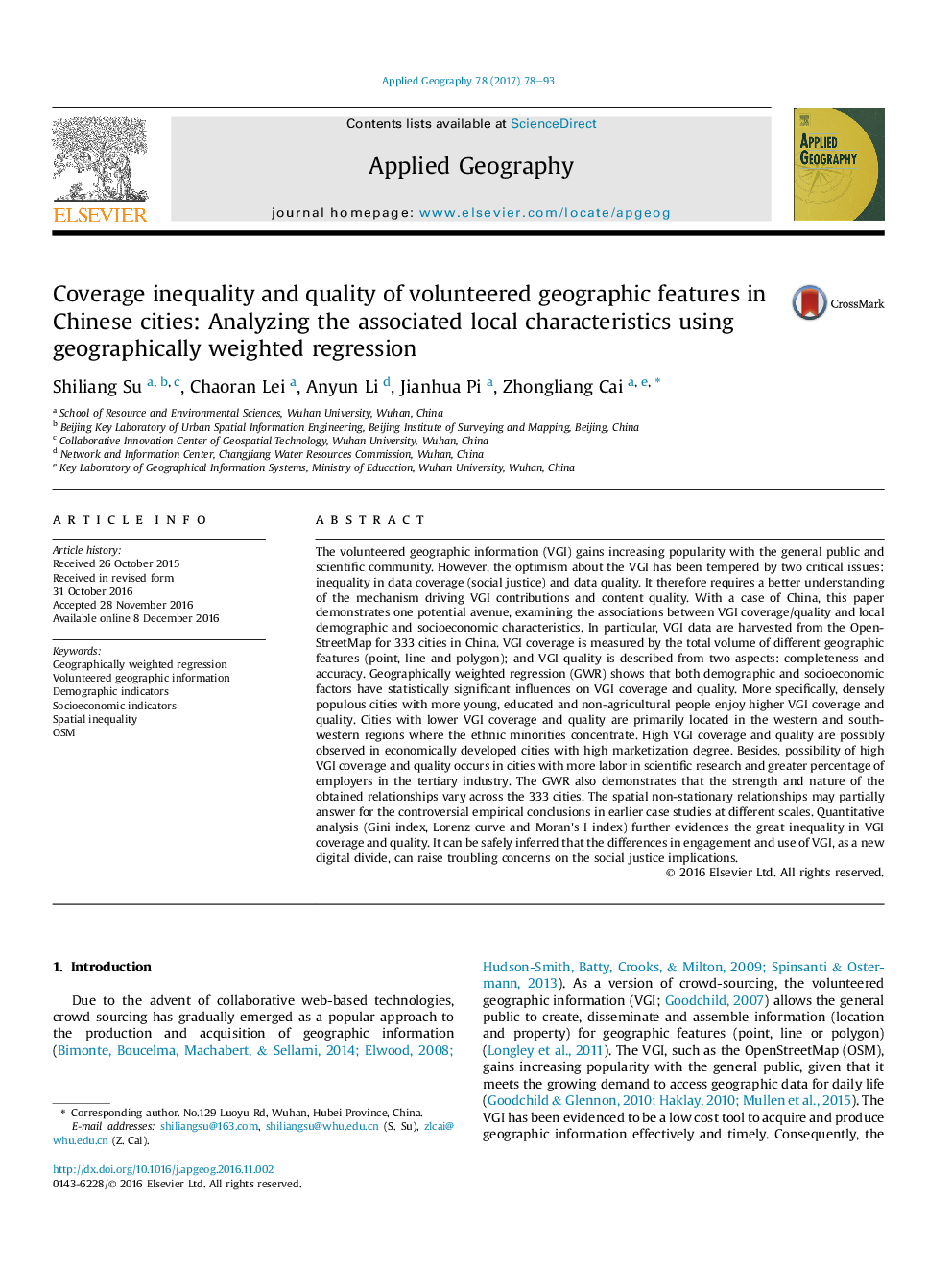ترجمه فارسی عنوان مقاله
نابرابری پوشش و کیفیت ویژگی های جغرافیایی داوطلبانه در شهرهای چینی: تجزیه و تحلیل ویژگی های محلی مرتبط با رگرسیون وزنی جغرافیایی
عنوان انگلیسی
Coverage inequality and quality of volunteered geographic features in Chinese cities: Analyzing the associated local characteristics using geographically weighted regression
| کد مقاله | سال انتشار | تعداد صفحات مقاله انگلیسی |
|---|---|---|
| 102403 | 2017 | 16 صفحه PDF |
منبع

Publisher : Elsevier - Science Direct (الزویر - ساینس دایرکت)
Journal : Applied Geography, Volume 78, January 2017, Pages 78-93

